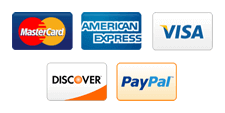Blockchain Categories and Why They Matter | iCert Global
.webp)
Blockchain became well-known due to Bitcoin, and it changed the way people perceive online transactions. When people started learning about Blockchain, they realized that Blockchain was capable of doing much more than Bitcoin. With time, a lot of industries such as healthcare, real estate, and politics started looking into the use of Blockchain technology. As each industry functions differently, Blockchain needed to change and evolve into various types. In this blog, I will explain the various types of Blockchain and how they are different.
Why are there various kinds of blockchain?
Different industries use Blockchain in different ways, so Blockchain must function differently for each industry. Let's look at some examples of how Blockchain is being used and why these uses need different forms of Blockchain before we discuss the number of different types of Blockchain.
We'll start with the first and most popular one: Bitcoin.
Bitcoin
Bitcoin is a popular virtual currency known as cryptocurrency. It enables individuals to transfer money online without the presence of a bank or middleman. For instance, if you need to transfer Bitcoin to another individual, you simply use his or her ID to effect the transfer. A process known as Blockchain mining verifies and confirms the transaction to ensure authenticity. Once the transaction has been confirmed, it is incorporated into the Blockchain, and the recipient gets the Bitcoin.
Bitcoin is accessible to all, so anyone can use it, send Bitcoin, or assist in verifying transactions. That is why there is no restriction on who can use Bitcoin. You can also look up Blockchain Explorer to have a real-time view of things like Bitcoin's price, mining power, etc.
Multichain
Multichain is a type of Blockchain used by companies to secure their information. Unlike public Blockchains, Multichain is accessible to individuals in a comparable company but only with permission. Unprivileged individuals are unable to view sensitive data.
For example, if a company wants to keep the information of financial transactions on the Blockchain, they don't want everyone to view it. Certain people like the finance team, managers, and members of the board should be able to view it.
In Multichain, only people who get an invitation can join the network. The Network Administrator decides who can join and who can check transactions. This keeps the data safe and private within the organization.
Blockchain in the Banking Sector
Banks apply the same principle as Multichain. The Blockchain is kept private and accessed by bank staff or partners only. In banking, the Blockchain is shared across all the bank's branches. It is sometimes shared with other banks as well to facilitate transactions between the two.
In this case, numerous trusted "nodes" (computers) can utilize the Blockchain, but only with permission. Thus, the Blockchain is not private but remains secure, available only to trusted individuals or banks.
Public Blockchain
A Public Blockchain may be created and accessed by anyone. Anyone may join the network or assist in validating transactions. With many different individuals in charge, no one individual can alter or manipulate the system. This makes the data highly secure and keeps it consistent.
Private Blockchain
A Private Blockchain, or a Permissioned Blockchain, limits access to it. Only designated people or groups chosen by the company are permitted to use and alter the Blockchain. The users are approved by the ones who originally created the Blockchain. If new users must be permitted or someone's access must be removed, the Network Administrator is responsible.
Consortium Blockchain
In Consortium Blockchain, all the selected nodes do not determine how the transactions are verified, while other nodes can be allowed to execute transactions. It's a mix of Public and Private Blockchains. It's both public to some extent since the majority of the nodes are keeping the Blockchain but private in the sense that it is only available for certain nodes. It is therefore both public and private.
How to obtain Blockchain certification?
We are an Education Technology company providing certification training courses to accelerate careers of working professionals worldwide. We impart training through instructor-led classroom workshops, instructor-led live virtual training sessions, and self-paced e-learning courses.
We have successfully conducted training sessions in 108 countries across the globe and enabled thousands of working professionals to enhance the scope of their careers.
Our enterprise training portfolio includes in-demand and globally recognized certification training courses in Project Management, Quality Management, Business Analysis, IT Service Management, Agile and Scrum, Cyber Security, Data Science, and Emerging Technologies. Download our Enterprise Training Catalog from https://www.icertglobal.com/corporate-training-for-enterprises.php and https://www.icertglobal.com/index.php
Popular Courses include:
-
Project Management: PMP, CAPM ,PMI RMP
-
Quality Management: Six Sigma Black Belt ,Lean Six Sigma Green Belt, Lean Management, Minitab,CMMI
-
Business Analysis: CBAP, CCBA, ECBA
-
Agile Training: PMI-ACP , CSM , CSPO
-
Scrum Training: CSM
-
DevOps
-
Program Management: PgMP
-
Cloud Technology: Exin Cloud Computing
-
Citrix Client Adminisration: Citrix Cloud Administration
The 10 top-paying certifications to target in 2025 are:
Conclusion
There are various types of blockchain as varying industries require varying degrees of security, accessibility, and governance. Being aware of them allows us to select the appropriate blockchain for every task. This makes blockchain technology secure and effective to utilize in numerous industries.
Contact Us For More Information:
Visit :www.icertglobal.com Email : 










Write a Comment
Your email address will not be published. Required fields are marked (*)